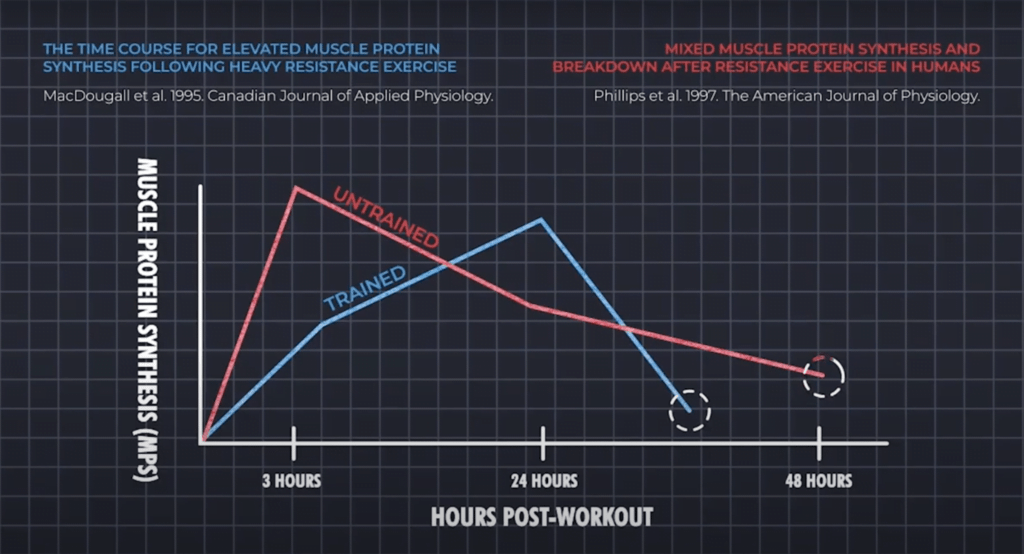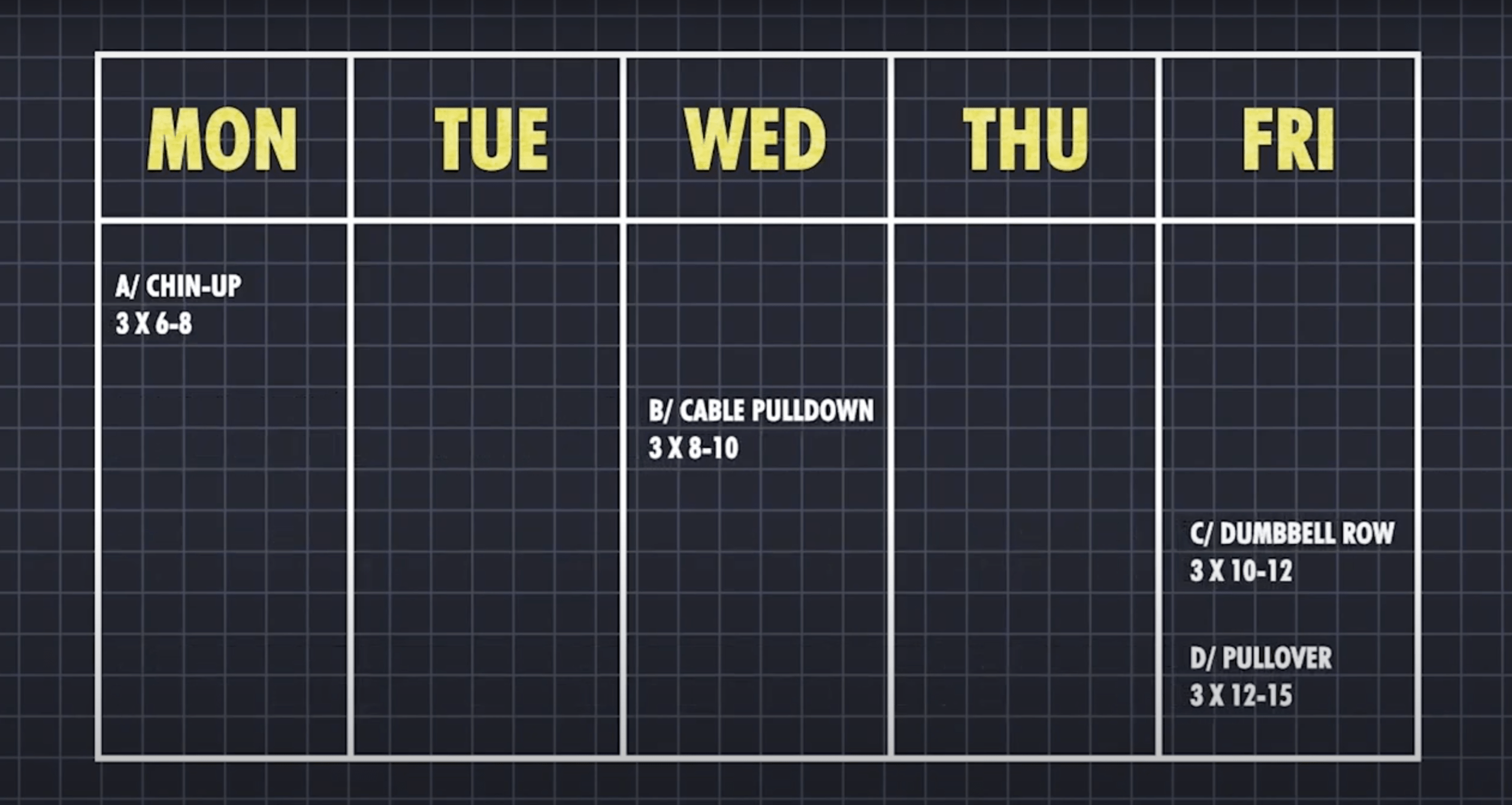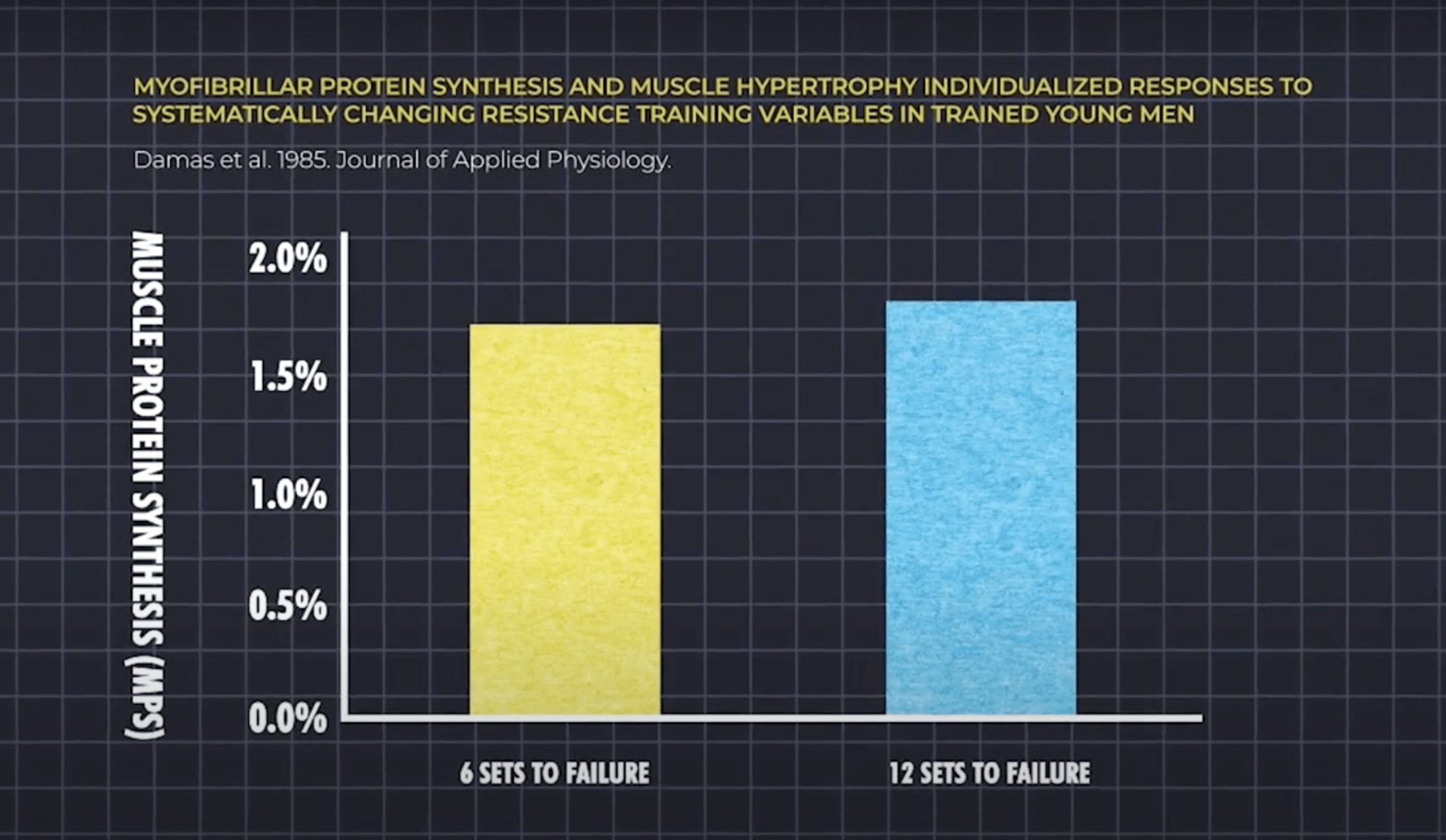
YOUR FITNESS BLOG
How Often You Should Work Each Muscle
How often you should work each muscle group, formally referred to as “training frequency,” is an important variable in the context of resistance exercise for muscle development (hypertrophy) [7]. Although many individuals that perform resistance exercise tend to focus on the total number of sessions per week, training frequency describes the number of times a specific muscle group is worked over per week [7]. The most common approach people tend to apply with resistance exercise is to work a given muscle group once per week. A survey completed by Hackett and colleagues (2013) revealed that among 127 competitive bodybuilders, approximately 69% worked a muscle group once per week and none reported using a training frequency of working a muscle group more than twice per week [3]. Although, older research by Schoenfeld and colleagues (2016) found that working a given muscle twice per week achieved superior muscle growth compared to once per week [7]. However, limited research on training frequency was available at that time. To better understand how often you should work each muscle and the potential benefits of higher training frequencies, this article will explore the impact of different training frequencies on muscle protein synthesis (mps), weekly volume (sets per muscle group), and per workout volume distribution.
Training Frequency and Muscle Protein Synthesis
Muscle protein synthesis is the process of building new muscle proteins and serves as an accurate proxy for gauging the effectiveness of the longer term impact of resistance training programs in the context of muscle development. The question around how often you should work each muscle largely revolves around maximising mps response. Research shows that mps will peak following a resistance exercise session between 5 and 24 hours, then begin to decline thereafter [2, 4, 5]. The idea is that, as muscle protein synthesis begins to decline around 24 hours post-workout, to time the next resistance exercise session to again peak mps.

When examining whether mps response in beginners, or untrained, individuals differ from experienced or trained individuals, both appear to follow a similar time course. The key difference appears to be that, among individuals new to resistance exercise, mps appears to be directed more towards muscle damage repair and not muscle building [1]. In support, a 2016 study by Damas and colleagues published in the Journal of Physiology showed that untrained lifters experienced the greatest levels of muscle damage in the first 10-weeks of a progressive resistance exercise program [1]. During this period, mps was its highest, but directed more to repairing damaged muscle [1]. However, by 10 weeks, muscle damage was significantly less and mps response was directed more towards muscle building [1].
Findings from the above study suggest that for beginners, working a muscle group once per week may be sufficient as the recovery process is longer. However, experienced individuals may benefit from higher training frequencies as the recovery process becomes shortened. Notably, the authors found that mps response peaked at 24 hours post exercise and was still elevated at 48 hours following a workout implying that working a muscle group once every 2 or 3 days may be ideal [1, 5].
Training Frequency and Volume
How often you should work each muscle also influences volume of work. Volume is the number of repetitions and sets performed for a given muscle group [6]. Alternatively, volume load, or total volume, describes the number of repetitions x sets x load. As muscle growth is dependent on the magnitude (intensity) of load and duration of stimulus (volume), it is widely accepted that volume is an important driver of muscle development. A 2016 meta-analysis by Schoefeld and colleagues found that each additional weekly set performed, the percentage gain in muscle size would 0.38% [6]. When comparing weekly sets on muscle growth, the authors showed a distinct advantage to 10 sets or more compared with less than 10 sets per week [6].

Increasing training frequency can be used as a means to increase total weekly volume per muscle group and subsequently muscle growth. Just by increasing the number of days a specific muscle is worked will increase total weekly volume. For example, if currently performing 8 weekly sets for legs over two workouts, adding a third workout to complete 3 more sets for legs would increase the total number of sets for legs from 8 to 11. According to the evidence, this volume increase would improve muscle development for that given muscle group.
A valid argument can also be made that just by distributing one’s current per workout volume over multiple days, it would conceivably increase total volume as well because sets would be performed under less fatigued conditions. For example, if performing 4 exercises for shoulders in a single workout, it is likely that accumulating fatigue would result in a decrease in total work completed (i.e. less number of repetitions performed or less resistance used each subsequent exercise). However, if the same 4 shoulder exercises were distributed across two workouts (i.e. two on each day), the completion of more repetitions and/or greater resistance would be probable because the exercises would be completed under less fatigued conditions.
Training Frequency and Volume Distribution
Research indicates there may be an upper limit to how many sets can be performed in a single session before a plateau in muscle protein synthesis occurs. According to the literature, this upper limit appears to be in the range of 10-12 sets per given muscle group [2]. In support, Damas and colleagues (2019) published a study in the Journal of Applied Physiology where the authors took 20 resistance trained young men and placed them through an 8-week resistance training program [2]. Subjects completed two workouts each week and performed both the leg press and leg extension. The authors found that 12 sets of legs (6 sets leg extension and 6 sets leg press) resulted in only small increases in muscle protein synthesis compared to 8 sets to failure (4 sets leg extension and 4 sets leg press) [2]. These findings suggest that individuals performing more than 10-12 sets per muscle in a single session may benefit from dividing up this volume across multiple workouts, as opposed to completing the work in a single session.

For example, an individual performing 4 exercises for shoulders for 3 sets in a single workout may benefit more from distributing these sets across two workouts (i.e. two shoulder exercises on two separate days), rather than performing all in a single session. Applying a training frequency of two days allows for 6 sets of shoulders to be completed on each workout, which may prove more effective for maximising muscle protein synthesis. Importantly, focus should still be placed on bringing individual sets closer to failure as well as ensuring sufficient rest between sets of about 2 minutes or more [6].
Summary
How often you should work each muscle (training frequency) describes the number of times a given muscle is worked over a week period. Literature supports that for individuals new to resistance exercise, working a specific muscle group once or twice per week is likely sufficient as the recovery process for untrained individuals is longer. However, with resistance training experience, the recovery process is shortened and a training frequency of two or more can be used to potentially enhance muscle growth. As volume is a primary driver of muscle growth, working a muscle multiple times per week via higher training frequencies can be an effective strategy to accelerate muscle development, provided enough time is given to recovery. Additionally, high training frequencies of 3 or more per week can be utilised as a tool to distribute per session volume if sets for a given muscle exceed 10-12 sets per workout.
For more information on our personal training service please click here to learn more.
References:
[1] Damas et al. 2016. Resistance Training-Induced Changes in Integrated Myofibular Protein Synthesis Are Related to Hypertrophy Only After Attenuation of Muscle Damage. September. Vol.594, No. 18, pp. 5209-5222. The Journal of Physiology.
[2] Damas et al. 2019. Myofibrillar Protein Synthesis and Muscle Hypertrophy Individualized Responses to Systematically Changing Resistance Training Variables in Trained Young Men. September. Vol. 127, No. 3, pp. 806-815. Journal of Applied Physiology.
[3] Hackett, D. A. et al. 2013. Training Practices and Ergogenic Aids Used by Male Bodybuilders. Vol. 27, No. 6, pp.1609–1617. Journal of Strength Conditioning Research.
[4] MacDougall et al. 1995. The Time Course For Elevated Muscle Protein Synthesis Following Heavy Resistance Exercise. December. Vol. 20, No. 4, pp.480-486. Canadian Journal of Applied Physiology.
[5] Phillips et al. 1997. Mixed Muscle Protein Synthesis And Breakdown After Resistance Exercise In Humans. July. Vol. 273 (1 Pt 1), E99-107. The American Journal of Physiology.
[6] Schoenfeld, B. J. et al. 2017. Dose-Response Relationship Between Weekly Resistance Training Volume and Increases in Muscle Mass: A Systematic Review and Meta-Analysis. June. Vol. 35, No. 11, pp. 1073-1082. Journal of Sports Sciences.
[7] Schoenfeld, B. J. et al. 2016. Effects of Resistance Training Frequency on Measures of Muscle Hypertrophy: A Systematic Review and Meta-Analysis. November. Vol. 46, No. 11. pp.1689-1697. Sports Medicine.

Did you find this content valuable?
Add yourself to our community to be notified of future content.

